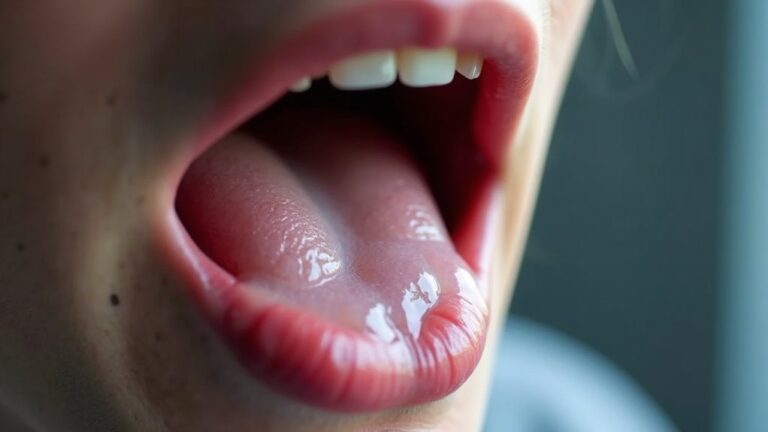Having a headache behind your right eye can feel like a mini-explosion in your head. It can really throw a wrench in your day and make even the simplest tasks seem impossible. But don’t worry, you’re not alone. There are several potential causes, each with its own quirks and symptoms. So, let’s investigate these headaches together, understand why they happen, and uncover some effective ways to soothe the pain and get you back to feeling like yourself again.
What Is a Headache Behind the Right Eye?
Provided you’ve ever experienced a headache behind your right eye, you know it can be a pretty frustrating issue. This type of pain often stems from various conditions, and grasping these can aid you in handling it better.
A migraine could present as a throbbing pain, commonly paired with nausea or visual disturbances. On the other hand, cluster headaches hit suddenly, causing severe pain accompanied by tearing and nasal congestion.
Sinusitis may also lead to discomfort in that area, as inflammation affects the sinuses. Additionally, eye strain from prolonged screen time or uncorrected vision can result in dull, persistent ache.
Identifying these symptoms can aid in finding the appropriate relief and improving your general comfort.
Causes of Headaches Behind the Right Eye
At the moment you find yourself with a headache behind your right eye, it can feel like an unwelcome intruder, interrupting your day. Various causes can lead to this discomfort.
A cluster headache could strike, bringing severe, stabbing pain behind one eye. Alternatively, a migraine headache might present throbbing sensations, paired with nausea or light sensitivity.
Sinus infections also contribute, causing pressure behind the right eye as sinuses are inflamed. Eye strain from too much screen time can lead to dull aches as well.
Additionally, conditions like trigeminal neuralgia cause sharp, electric-like pain radiating to the eye. Grasping these causes helps you tackle the pain more effectively and seek appropriate relief.
Symptoms Associated With Headaches Behind the Right Eye
As you’re handling headaches behind your right eye, you’re likely to observe a variety of symptoms that can genuinely impact your day. From sharp pains to dull pressure, the kind of headache you’re experiencing frequently presents with particular indicators such as nausea or light sensitivity. Let’s delve into what symptoms you could encounter depending on various headache types and any extra signals to be aware of.
Common Symptoms Overview
Experiencing a headache behind your right eye can be quite distressing, especially if the pain feels sharp or throbbing. You could observe some common symptoms accompanying this type of headache. Here’s a quick guide to assist you in recognizing what you may be encountering:
| Common Symptoms | Associated Conditions |
|---|---|
| Throbbing or stabbing pain | Cluster headaches |
| Redness or tearing | Cluster headaches, scleritis |
| Sensitivity to light | Migraine headaches |
| Nasal congestion | Sinusitis, cluster headaches |
| Nausea | Migraine headaches |
These symptoms can occur on one side, particularly affecting your right eye, and could involve pain behind your eyes. Grasping these indicators can aid you in seeking suitable relief.
Specific Manifestations by Type
Headaches behind the right eye can manifest in various ways, each tied to distinct root causes. For instance, in the event you’re experiencing a throbbing pain, you could be handling migraines, often accompanied by nausea and visual disturbances, like auras affecting your right visual field.
On the other hand, cluster headaches can hit suddenly, resulting in a stabbing pain with redness and tearing on the same side, often causing nasal congestion. Should your headache feel pressure-like, it could be a sinus infection, particularly should bending forward worsens the pain.
Spending too much time in front of screens can lead to digital eye strain, causing dull discomfort. Temporal arteritis might also bring persistent pain along with jaw discomfort and possible vision loss.
Additional Symptoms to Consider
It’s essential to pay attention to the additional symptoms that come along with headaches behind your right eye, as they can provide clues about the root cause.
These accompanying symptoms can vary widely and might include:
- Nausea or vomiting, often seen with migraines.
- Sensitivity to light or sound, making it tougher to handle everyday situations.
- Visual disturbances like blurred vision or tingling sensations that signal potential onset.
Other signs to observe are facial pressure, nasal congestion, or dry eyes in case a sinus issue is emerging.
Each symptom adds a layer of insight, so identifying them can steer you toward the right treatment and relieve some of that discomfort.
Don’t hesitate to consult a healthcare professional for a more thorough look at your symptoms.
Risk Factors for Headaches Behind the Right Eye
Provided that you frequently experience pain behind your right eye, it’s beneficial to evaluate what could be contributing to those headaches.
Hormonal changes, lifestyle habits such as smoking or screen time, and even your family history can all play a role.
Recognizing these risk factors can assist you in managing and possibly reducing your headaches.
Hormonal Changes Impacting Headaches
Traversing the maze of hormonal changes can be tricky, particularly as they impact your health. If it comes to headaches, especially right eye pain, hormonal shifts are significant. Here are a few key factors to keep in mind:
- Estrogen Fluctuations: During menstruation, pregnancy, or menopause, rising and falling estrogen can trigger migraines.
- Progesterone Drops: A decrease in progesterone before your period often leads to menstrual migraines, with right eye pain reported in about 50% of cases.
- Oral Contraceptives: Birth control pills containing estrogen might increase headache frequency, particularly for women prone to migraines.
Being aware of these changes can help you identify patterns in your headaches and manage them more effectively.
Lifestyle Factors and Triggers
Everyday choices play a key role in how we feel, particularly as it comes to headaches behind your right eye. Stress is a major trigger, often leading to tension headaches.
You may notice that poor sleep and irregular sleep patterns can escalate migraines and cluster headaches, which commonly affect this area. Excessive screen time can worsen eye strain, contributing further to your discomfort.
Don’t forget about alcohol—especially red wine—as it can trigger those pesky cluster headaches. Staying hydrated is essential; even mild dehydration can intensify headache symptoms.
Through being aware of these lifestyle factors, you can work to minimize your triggers and find relief from those frustrating headaches behind your right eye.
Family History and Genetics
At the time it comes to headaches behind your right eye, your family history could just play a significant role. A genetic predisposition can be a powerful cause of these headaches.
Here are a few ways your background could be influencing your pain:
- Migraine History: Provided you have an immediate relative with migraines, your risk of similar headaches increases up to 60-80%.
- Cluster Headaches: Genetic mutations, especially in the TRPM8 gene, are linked to these often debilitating headaches that involve severe pain behind one eye.
- Hereditary Factors: Twin studies show genetics can account for 34-57% of cluster headache risk, emphasizing how familial ties often play a pivotal role in your experiences.
Understanding this connection can help you seek effective treatment and coping strategies.
Prevention Strategies for Headaches Behind the Right Eye
While you might not consider it often, caring for your general wellness can make a notable impact in preventing those pesky headaches behind your right eye. Here are some effective strategies to help tackle your headache pain:
| Strategy | Details |
|---|---|
| Sleep Schedule | Aim for 7–9 hours nightly |
| Screen Breaks | Follow the 20-20-20 rule |
| Hydration | Drink at least 8 cups of water daily |
| Trigger Awareness | Avoid alcohol, caffeine, and processed foods |
| Stress Management | Practice deep breathing and yoga |
These steps can greatly reduce common complaints of pain behind the eyes and help you identify headache triggers. Through prioritizing these strategies, you’ll learn how to prevent headaches behind your right eye for good.
Diagnostic Approaches for Headaches Behind the Right Eye
At times you’re experiencing a headache behind your right eye, it’s crucial to grasp the importance of precise diagnosis to address the underlying issue.
Your healthcare provider will likely begin with a comprehensive neurological exam to evaluate your reflexes, coordination, and vision. This aids in determining whether you’re managing migraine or cluster headache patterns.
Here are three key diagnostic approaches:
- Neurological Examination: Evaluates symptoms like vision changes or coordination issues.
- Imaging Tests (CT or MRI): These scans exclude structural problems such as tumors or aneurysms.
- Sinus Imaging: X-rays or CT scans of the sinuses can detect any associated concerns.
With these methods, you can gain clarity on your headaches and progress toward identifying the appropriate solution.





